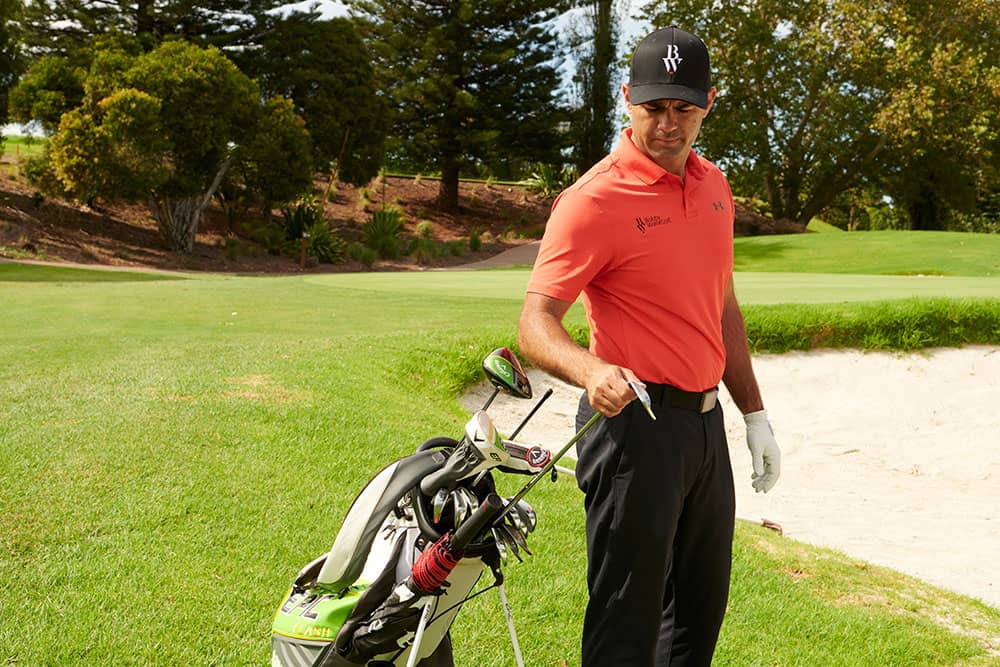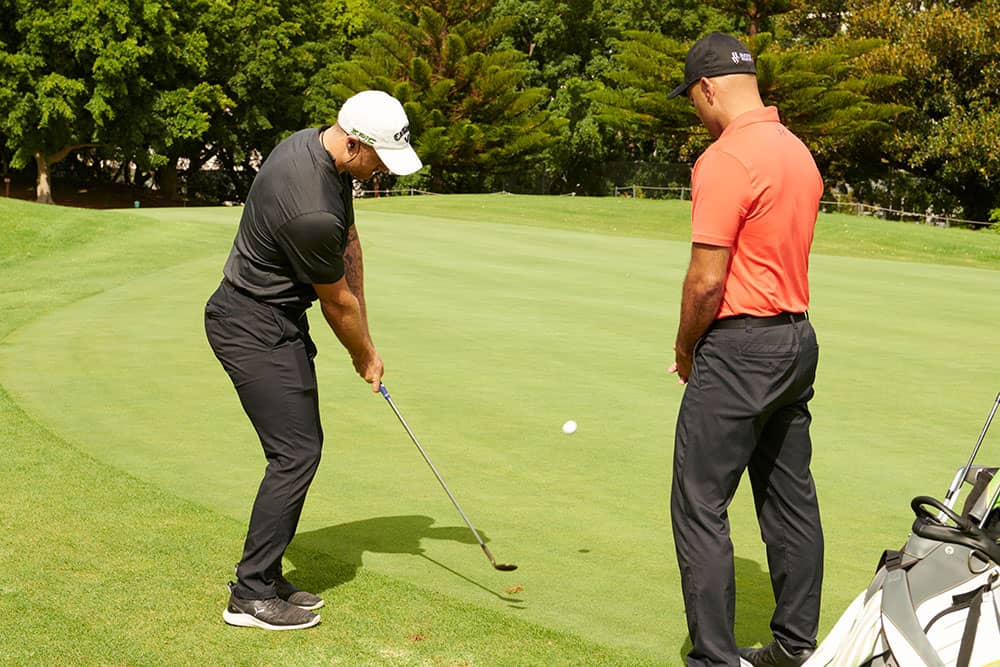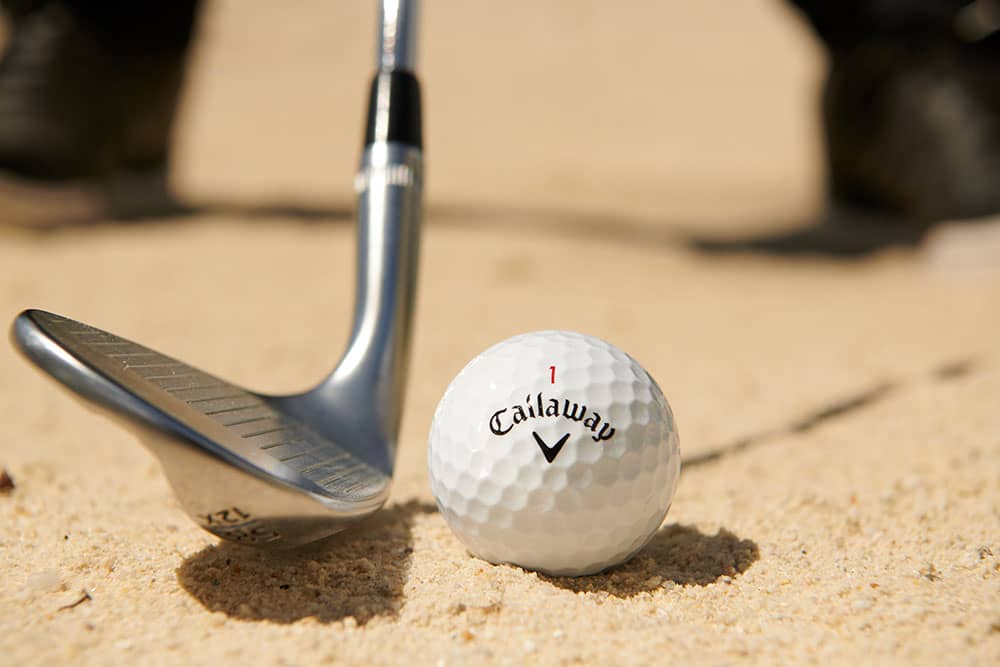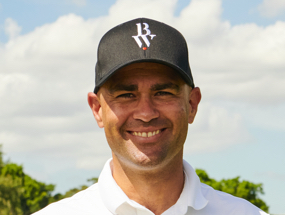Often, talking about how far you hit the ball in golf is referring to a drive or a full swing with your mid to long irons. However, with over half your shots as a golfer being part of your short game, reducing the number of strokes you need to get the ball in the hole from within 120 yards is where the real improvement happens.
For these shorter shots, wedges are key, making it important to know how far you hit with each one. Here, we’ll look at how to measure how far you hit your wedges, how many wedges you should carry, and how far the pros hit their wedges to help you gain an understanding of how to use your wedges to their full advantage.

How to Measure How Far You Hit Your Wedges
Many golfers struggle to know exactly how far their wedges go. If you really want to make improvements in your short game, a general guess won’t cut it.
For the best measurement of how far you hit your wedges, head to the driving range. Use your sand wedge to hit toward a target or distance marker you believe the wedge is well suited to. Hit 10 shots and measure how far each one went. If you hit a particularly bad shot, you can skip counting it.
Alternatively, when we are teaching, we use a Flightscope launch monitor to give accurate readings of distances, spin rates, clubhead speed and a huge range of data to help dial in your game.
For the highest accuracy when measuring, a laser range finder, smartwatch, or GPS measuring device are the gold standards. However, you can still get an accurate measurement without these golf technologies. When out on the golf course, simply pace the distance to each shot and record how far you hit each one.
Once you have your measurements for each hit, calculate the average distance of the 10 shots and record the final result. Repeat the process with your other wedges and you will enter your next game with valuable knowledge for your short game.
If you want to get even more precise you can also keep a note of the shortest and longest distances you hit the ball with each wedge to give you a range for each club. Remember, wedges can be used for chip shots and pitch shots around the green as well.
If hitting 10 balls is not possible for you, try hitting 3 in a row on a quiet day on the course or at the driving range. Use the yardage markers to get a rough idea of how far you hit the ball with your wedges. Although this is less precise, it can still help you improve your short game by giving you a better sense of the range of each of your wedges.
Know Your Pitching Wedge Loft
If you do not know your pitching wedge loft, the gap between your pitching and gap wedge may be too large. A quick online search should give you the specs you need.
Know The Shots You Struggle With
Perhaps you struggle with the ability to hit a high shot if you don’t have a high enough lofted lob wedge. Or maybe you struggle to get out of a bunker because you need something to pop it out easier, Knowing the shots you struggle with can you know how to choose the right wedge.
Check the Grooves for Wear and Tear
If your wedges are more than 3 years old, it is worthwhile to inspect the clubs to see if the grooves are getting worn down. This may affect the amount of control and spin you get with your wedge shots.
How Many Wedges Should I Carry?
I typically recommend carrying three wedges — a pitching wedge, a gap wedge, and a sand wedge — with approximately 4 to 6 degrees of difference between them.
Should I Carry A Lob Wedge?
Some players prefer to also carry a lob wedge to increase their options. However, with a maximum of 14 clubs that can be carried, having a lob wedge means you will have to compromise on longer clubs.
play” width=”1000″ height=”667″ class=”aligncenter size-full wp-image-4112″ />
What About Those In-Between Distances?
Regardless of the number of wedges you carry, there also seems to be a wedge shot that is ‘in-between’ the distance your full wedge shots can carry.
Accurately adjusting to these ‘in-between’ shots can make all the difference in setting you ahead of other players.
Amateurs often handle in-between shots by trying to swing slower. This can result in a poor shot due to deceleration at impact.
The best tip for handling these shots is to simply grip the club lower and swing as you normally would. Gripping down an inch further can take off 5 yards. Gripping down even further could take as much as 20 yards off a wedge.
How Far Do the Pros Hit Their Wedges?
Maybe have these in metres as well?
PGA Tour professionals hit an average distance of:
- 130 to 135 yards (118m – 123m) for a pitching wedge
- 115 to 120 yards (105m – 110m) for a sand wedge
- 75 to 95 yards (68m – 86m) for lob wedges
By comparison, players on the LPGA Tour hit pitching wedges between 105 to 110 yards and lob and sand wedges between 75 to 90 yards.
Professional golfers carry between 3 to 4 wedges with lofts between 46 to 60 degrees. Their preferred wedges change according to conditions and course design. Occasionally, pro golfers will carry a 5th wedge to increase their options.
It’s important to remember not to get too hung up on comparing your wedge hits to the pros or anyone else you play with.
Want More Advice On Your Short Game?
Inside 125 yards, control and direction are more important than hitting far. Reliable, accurate wedge play can improve your overall game and make up for other areas you still need improvement in.
The specific wedges you select will come down to your individual preferences. Having carefully chosen clubs for your short games ensures you can comfortably cover a decent range of distances.
So make sure to get out there and record the ranges of each of your wedges rather than playing blindly with them. Make the necessary changes needed to make sure you have your short-yardage covered.
If you would like to learn more about improving your short game, I offer personalised video analysis and remote coaching to help improve your short-yardage shots and all aspects of your game.




